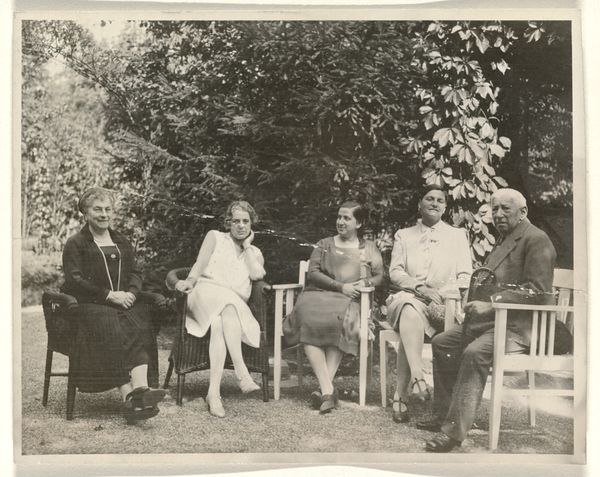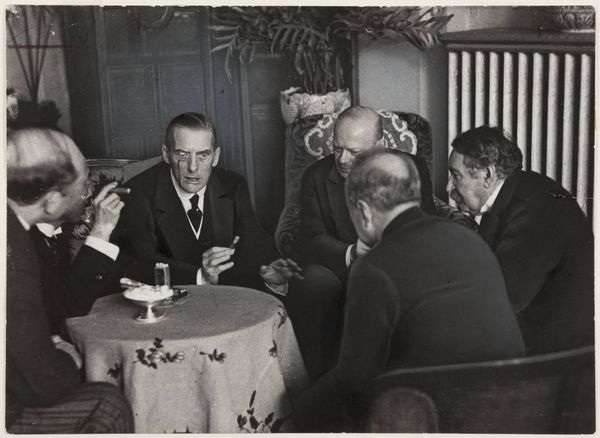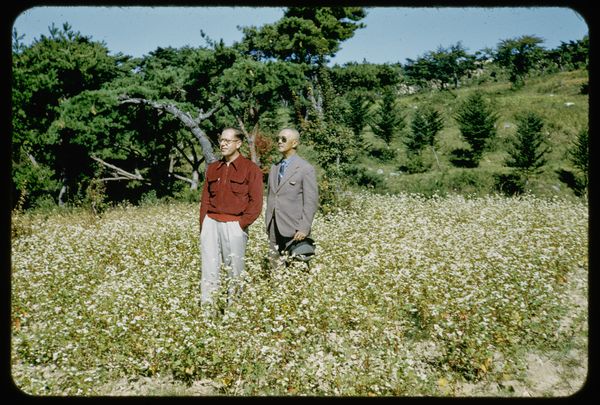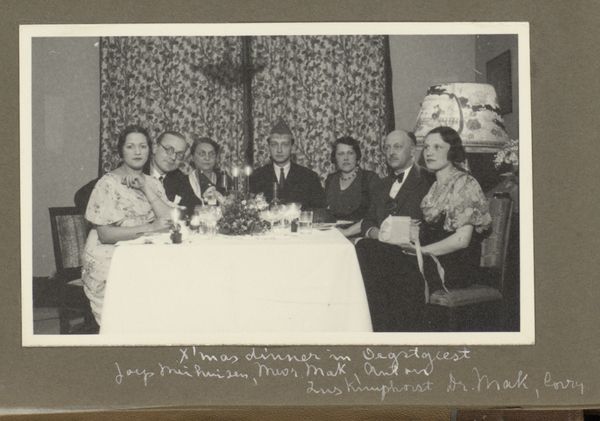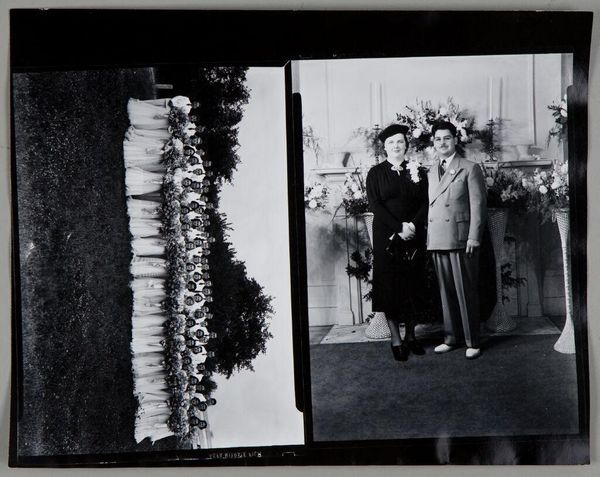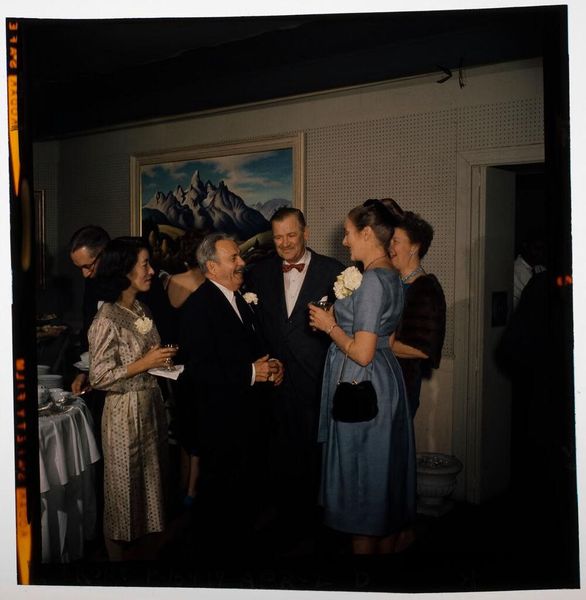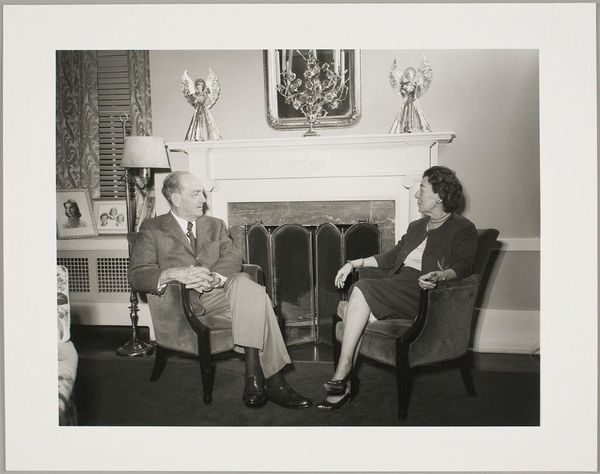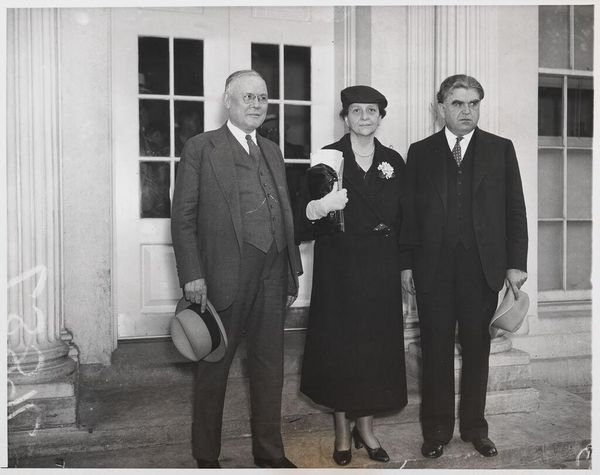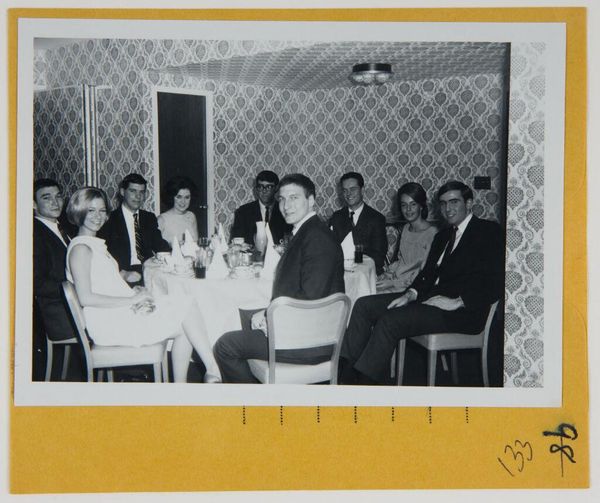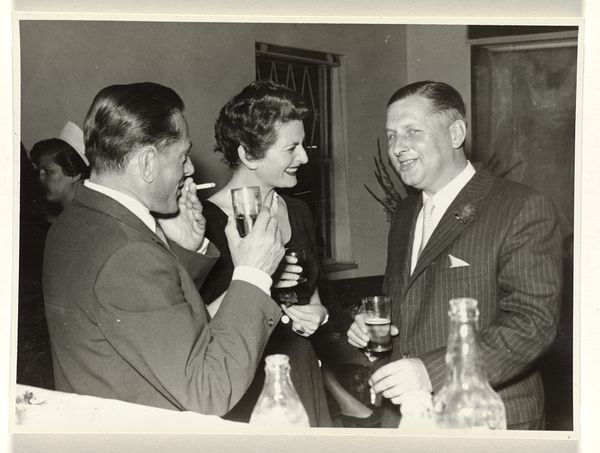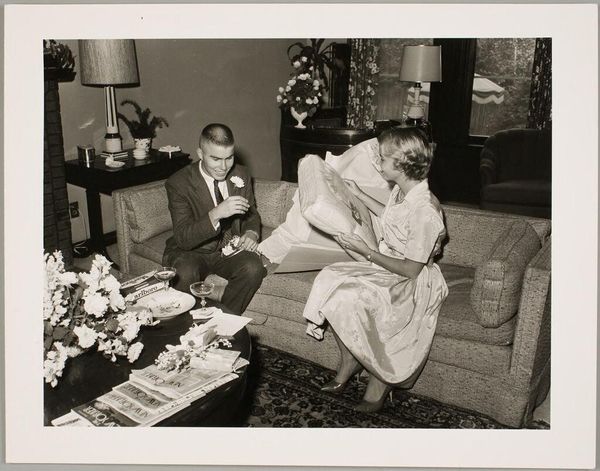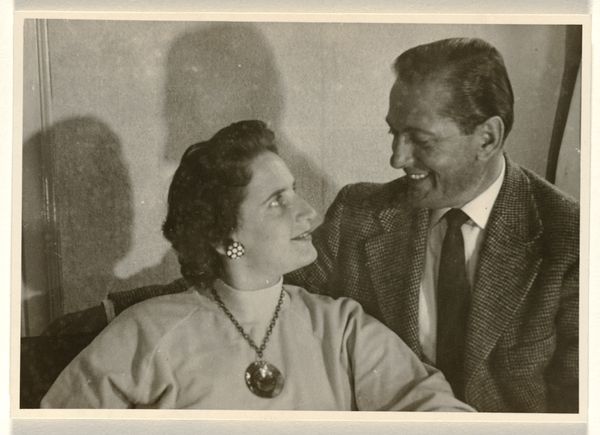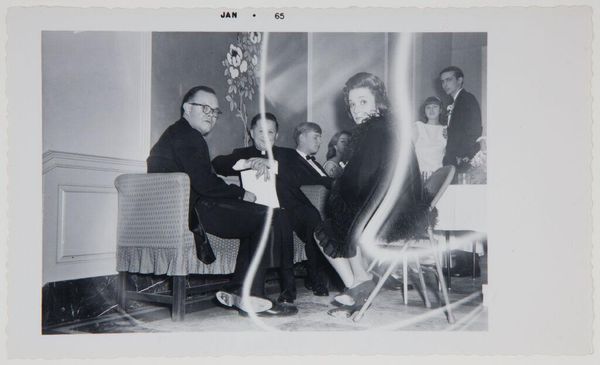
Dimensions: height 5 cm, width 5 cm
Copyright: Rijks Museum: Open Domain
Curator: Here we have a photograph titled "David Ketel met de Heer Van Marle in Busan," captured in 1952 by David Ketel himself. It's part of the Rijksmuseum collection. Editor: The composition strikes me immediately. There’s something almost staged about the arrangement of figures and the deliberate use of the garden as backdrop. The stark white of the table and benches also really pops. Curator: Yes, the composition guides us. Ketel positions himself and Mr. Van Marle within this carefully constructed scene that hints at Dutch influence abroad during that post-war era. Look at the contrast of Western and Eastern dress as they share tea, suggesting collaboration even though they are staged within a private, exterior space. It speaks volumes about global politics. Editor: Agreed, but the framing and the attention to lighting and colour elevates this from simple documentation to a nuanced portrayal. I’m intrigued by how Ketel employs a relatively high depth of field; the sharpness across the scene invites the eye to wander. It's clear the photograph’s organization guides our visual interpretation and highlights key aspects like body language. Curator: Note also that these photographs became products of Dutch government initiatives—distributed as part of public relations campaigns to solidify trading partnerships and promote cultural influence on an international stage. This wasn't merely about visual appeal, it was about consolidating Dutch identity amid decolonization struggles and a shifting geopolitical arena. Editor: You highlight essential social components of its creation, but on the more symbolic level, one sees here just the details; note, for instance, the contrasting garments. There are Western and Eastern styles subtly interacting—further, each character has unique headgear or adornment as they participate in leisure activities. Curator: These aren't happenstance elements though; they were crafted—they tell about power dynamics between various players while promoting certain manufactured stories for particular consumption needs in relation international power. Editor: I see it more about using art itself and careful artistic elements inside the photographs in forming viewers impressions that go past straightforward documents to instead give deep insight. Curator: Yes… the photographic process as a tool of power rather than simply aesthetics, you can't deny this plays into all discussions on artwork. Editor: And the power that such images maintain over shaping interpretations depends a lot by paying close watch specifically its internal structures not excluding however wider framework when taken together it is even comprehensive examination .
Comments
No comments
Be the first to comment and join the conversation on the ultimate creative platform.
